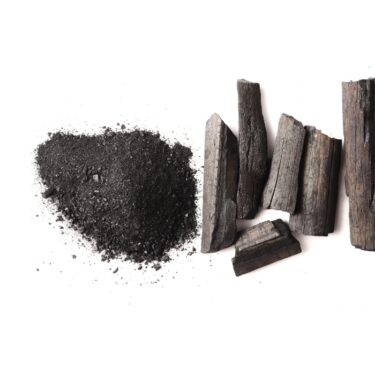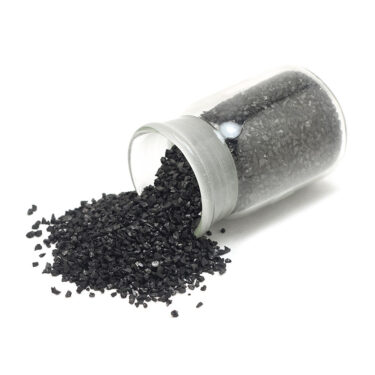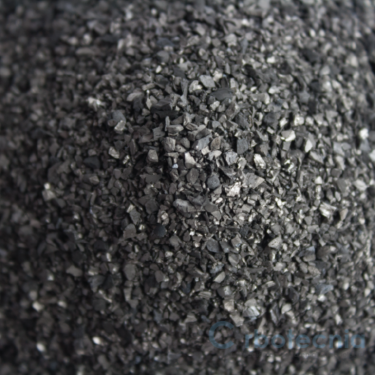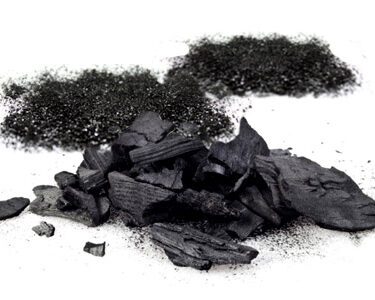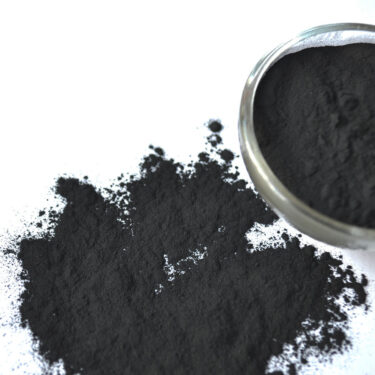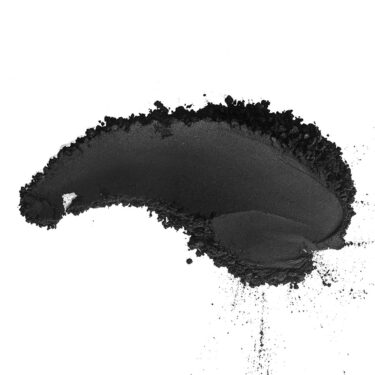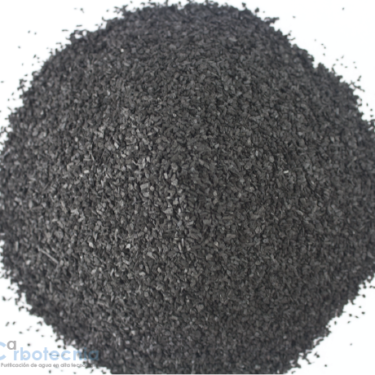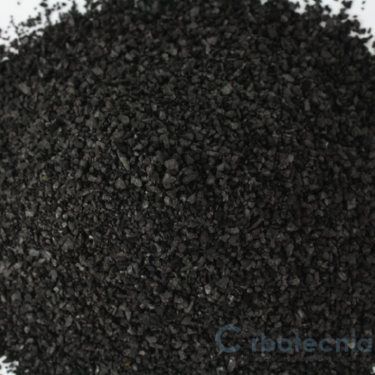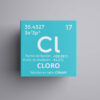What is the difference between a bituminous and a lignite activated carbon?
PHYSICAL PROPERTIES:
Activated carbon of bituminous origin usually has a larger surface area than that of ligneous origin, but ligneous has a higher proportion of macropores – diameter greater than 500 A-. Bituminous coal has a higher density than lignite carbon.
Wastewater pollutants are usually a mixture of large, medium and small molecules. In oil refineries, textile, paper and dye companies, large molecules predominate.
Therefore, since lignite carbon has a higher proportion of macropores, it is more efficient than the bituminous coal – comparing equal volumes of bedding –.
Bituminous carbon has most of its surface area in the micropore range – diameter less than
20 A – where a large molecule, like a dye, cannot enter, and therefore is not adsorbed.
|
TYPICAL PROPERTIES
|
LIGNITE
|
BITUMINOUS
|
|
Total surface area (m2 / g)
|
600 – 650
|
700 – 1000
|
|
Iodine number (mg / g)
|
550 – 600
|
700 – 950
|
|
Apparent Density (g / cm3)
|
0.35 – 0.42
|
0.42 – 0.50
|
|
Pore volume (cm3 / g)
|
1.0
|
0.85
|
|
Effective particle size (mm)
|
0.75 – 0.90
|
0.80 – 0.90
|
|
Moisture when packing (% max)
|
12
|
4
|
|
Number of molasses (RE)
|
100 – 120
|
40 – 60
|
|
Ash continent (%)
|
12 – 18
|
5 – 8
|
|
Average pore radius (A)
|
33
|
14
|
THERMAL REACTIVATION OR REGENERATION:
In the thermal reactivation of bituminous carbons, a part of the total surface area is lost. This loss is caused by the rupture of micropores, producing among several of these a macropore, which is capable of retaining a macromolecule and thus acquire characteristics similar to those of a carbon of ligneous origin. The more reactivations a bituminous carbon undergoes, the more it will resemble a lignite carbon (although not to the same extent).
On the other hand, when a lignite carbon is thermally reactivated, its pores tend to maintain their size
original. In other words, the properties of a lignite carbon are very similar between a virgin and a reactivated one. It should also be mentioned, that the manufacturer of a virgin bituminous carbon can make it acquire large pores, through an increase in temperature, residence time or oxygen in the activation furnace.
During reactivation, more material losses are generated in the case of bituminous coal than
than in the lignite. In addition, lignite carbon is reactivated more easily and quickly under the same conditions. This is attributed to both the size of the pores, which are larger, and the higher ash content, which catalyzes the activation or reactivation of carbons.
HYDRAULIC PROPERTIES:
Both types of carbons, whether virgin or reactivated, cause a similar pressure drop in the liquid and
bed expansion of both is also similar.
In conclusion, for applications where macromolecules predominate, lignite carbon is more efficient than the bituminous, provided the bituminous carbon is not reactivated, or has not been manufactured from large pores.
A reactivated bituminous coal carbon has properties similar to those of a lignite carbon. The latter does not change its properties when reactivated.
In case where micromolecules predominate – odors, flavors, low molecular weight organics, volatile compounds and others – bituminous coal carbon is much better than the lignite one.
Source: From John, P: “Carbon from Lignite or Coal: Which is Better?”, Chem. Eng., April 26, 1975
Comparte:
Necesitas más información, escríbenos.
Algunos productos que te pueden interesar
-
AA-3 Activated carbon to reduce color and flavor in tequila and other distilled spirits
Add to quote -
Micro K Coconut shell activated carbon
Add to quote -
Micro 4 LF Coconut shell activated carbon free of fines
Add to quote -
Megapol C – Wood powder activated carbon
Add to quote -
Megapol E – Wood powdered activated charcoal
Add to quote -
Micropol 4 200 – Coconut shell powdered activated carbon
Add to quote -
Mega – Wood granular activated carbon
Add to quote -
Gama L – Lignite coal mineral activated carbon
Add to quote


